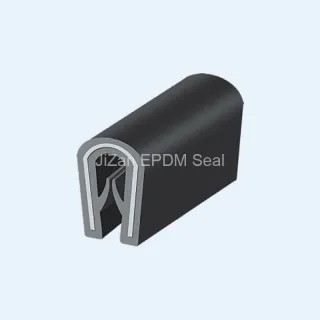How Often Should You Replace Weather Stripping
Weather stripping is an often overlooked but crucial component of your home's insulation and energy efficiency. It serves as a barrier between the interior and exterior, preventing air leaks, drafts, and moisture infiltration. Over time, weather stripping can wear out, leading to decreased efficiency and increased energy bills. In this article, we will explore the factors that influence the lifespan of weather stripping and provide guidance on how often you should replace it to maintain a comfortable and energy-efficient home.
Understanding Weather Stripping
Weather stripping is typically made from various materials, including rubber, vinyl, foam, and metal. Its primary purpose is to seal gaps and cracks around windows, doors, and other openings in your home's envelope. When properly installed and maintained, weather stripping helps to:
Save Energy: By preventing drafts and air leaks, weather stripping helps maintain a consistent indoor temperature, reducing the workload on your heating and cooling systems.
Enhance Comfort: A well-insulated home with intact weather stripping offers better thermal comfort by keeping unwanted outdoor elements at bay.
Prevent Moisture Infiltration: Weather stripping also helps to prevent moisture from entering your home, reducing the risk of water damage and mold growth.
Factors Affecting Weather Stripping Lifespan
The lifespan of weather stripping can vary depending on several factors:
Material: The type of weather stripping you have plays a significant role in its durability. For example, metal weather stripping tends to last longer than foam or rubber alternatives.
Quality: Higher-quality weather stripping materials and installation generally result in a longer lifespan.
Climate: Homes in extreme climates, where temperature fluctuations and weather conditions are more severe, may experience faster wear and tear on weather stripping.
Usage: Frequent opening and closing of doors and windows can accelerate the deterioration of weather stripping.
Maintenance: Regular cleaning and maintenance can extend the life of weather stripping. Lubricating movable parts, such as door hinges, can also help reduce wear.
When to Replace Weather Stripping
Determining when to replace weather stripping depends on a few key indicators:
Visible Damage: Inspect your weather stripping regularly for visible signs of wear and tear. Look for cracks, gaps, fraying, or peeling. If you notice any of these issues, it's time for replacement.
Drafts and Air Leaks: If you feel drafts or notice air leaks around doors and windows, your weather stripping may no longer be effectively sealing these openings.
Energy Bills: An increase in your energy bills can be a sign that your home's insulation, including weather stripping, is not performing as it should.
Age: As a general rule of thumb, consider replacing weather stripping every 5-10 years, depending on the material and climate. Metal weather stripping can last longer, while foam or rubber may need replacement sooner.
Noise and Pest Problems: If you hear more noise from the outside or notice pests entering your home, it could be a sign that your weather stripping is compromised.
Conclusion
Weather stripping is an essential element in maintaining a comfortable and energy-efficient home. Regular inspections and timely replacements can help you ensure that your weather stripping is performing its job effectively. By paying attention to the factors influencing its lifespan and heeding the warning signs of wear and tear, you can keep your home well-insulated, energy-efficient, and comfortable for years to come.
452
0
0




Comments
All Comments (0)